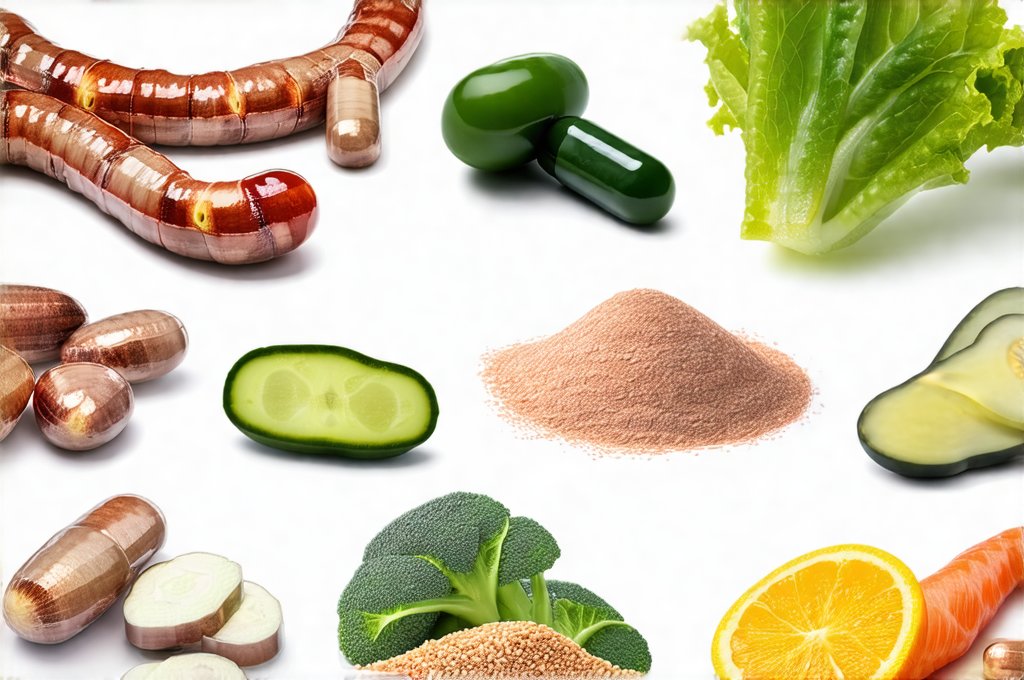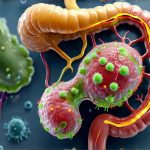Antibiotics, while life-saving, can often leave our digestive systems feeling like a warzone. They don’t discriminate between harmful bacteria causing illness and the beneficial microbes essential for healthy digestion, nutrient absorption, and even immune function. This disruption, known as dysbiosis, can lead to uncomfortable symptoms like bloating, gas, diarrhea, constipation, and a weakened ability to fight off future infections. Similarly, gastrointestinal (GI) infections – whether viral or bacterial – wreak havoc on the gut’s delicate ecosystem, leaving it vulnerable and depleted. Rebuilding microbiota diversity after cleanse protocols or extreme diets is crucial for restoring digestive health and overall well-being, and that’s where targeted nutrition plays an incredibly important role.
The good news is that food is medicine, and specific recipes can powerfully support gut healing. These aren’t about restrictive diets or bland foods; they’re about incorporating ingredients known to soothe inflammation, nourish beneficial bacteria, and aid in the restoration of a healthy gut lining. Think easily digestible proteins, fiber-rich vegetables prepared in gentle ways, fermented foods brimming with probiotics, and hydrating fluids. The focus shifts from simply “tolerating” food to actively using it as a tool for recovery and revitalization. This article will explore recipes designed specifically for post-antibiotic or GI infection healing, focusing on nourishing the gut while minimizing irritation and promoting a thriving microbiome.
Nourishing Broths & Gentle Soups
Broths are often the first step in reintroducing food after a significant GI disturbance. They’re incredibly easy to digest, provide essential electrolytes lost through diarrhea or vomiting, and offer soothing hydration. Bone broth is particularly beneficial due to its collagen content, which supports gut lining repair. However, even vegetable broths can be powerfully healing when made with specific ingredients. The key is gentle preparation; avoid harsh spices or excessive salt. Soups build on the foundation of broth by adding easily digestible vegetables and proteins, slowly reintroducing more complex nutrients as tolerated.
A simple chicken and vegetable soup, for example, uses shredded chicken breast (easy to digest) along with cooked carrots, zucchini, and sweet potatoes – all gentle on the stomach. Avoid cruciferous vegetables like broccoli or cauliflower initially, as they can be gas-producing. The addition of a small amount of ginger offers anti-inflammatory benefits and aids digestion. Similarly, incorporating turmeric into broth-based soups provides additional anti-inflammatory support. Remember to start with smaller portions and gradually increase as your tolerance improves. How gut recovery after antibiotics requires careful dietary management to avoid indigestion is key during this stage.
Fermented Foods & Probiotic Boosts
Fermented foods are the cornerstone of gut healing because they naturally contain probiotics – live microorganisms that contribute to a healthy gut microbiome. While probiotic supplements can be helpful, getting probiotics from food sources offers added benefits like prebiotics (food for the probiotics) and other nutrients. However, introducing fermented foods needs to be done cautiously after antibiotic use or GI infection, as some individuals may experience temporary increased gas or bloating. Start with small amounts and observe your body’s response.
Kefir, a fermented milk drink, is often more easily tolerated than yogurt due to its thinner consistency and wider range of probiotic strains. Sauerkraut (unpasteurized) and kimchi are also excellent sources, but again, start slowly. For those sensitive to dairy or soy, water kefir offers a fantastic alternative – it’s made from water and sugar and fermented with kefir grains. Beyond the drinks, incorporating small amounts of traditionally fermented pickles (not vinegar-based) can provide a probiotic boost. These foods aren’t just about probiotics; they also contribute to overall nutrient density and support a diverse microbiome. Restoring gut balance after foodborne illness, parasites, or infections often benefits greatly from these additions.
Soothing Smoothies for Digestive Support
Smoothies are an excellent way to deliver concentrated nutrition in an easily digestible format. The key is to avoid ingredients that might trigger symptoms. Focus on gentle fruits like bananas or blueberries, paired with healthy fats (avocado) and protein sources (collagen powder). Avoid citrus fruits initially, as their acidity can irritate a sensitive gut.
- Banana Blueberry Gut Soother: 1 frozen banana, ½ cup frozen blueberries, ½ avocado, 1 scoop collagen powder, 1 cup unsweetened almond milk or coconut water, small pinch of ginger. Blend until smooth.
- Tropical Turmeric Smoothie: 1/2 cup frozen mango, 1/4 cup pineapple chunks (small amount), 1 tbsp coconut yogurt (probiotic boost), ½ tsp turmeric powder, 1 cup coconut water. Blend until smooth.
Adding a tablespoon of flaxseed meal or chia seeds provides fiber to support gut motility, but start with small amounts to avoid bloating. Remember that smoothies should be supplemental, not the primary source of nutrition; aim for whole foods whenever possible. Using functional foods to gently rebuild gut microbiota after antibiotics can supplement these efforts.
Reintroducing Fiber Gradually
Fiber is essential for gut health, but reintroducing it after a GI disturbance requires caution. Too much too soon can lead to gas, bloating, and discomfort. Start with easily digestible fiber sources like cooked sweet potatoes or well-cooked carrots. Avoid raw vegetables initially, as they’re harder to digest.
- Cooked Vegetable Mash: Steam or boil small portions of sweet potato, carrot, and parsnip until very tender. Mash together with a little bit of olive oil or coconut oil for added fat absorption.
- Oatmeal (Gluten-Free): Choose certified gluten-free oats and cook them thoroughly with water. Add a small amount of mashed banana or applesauce for sweetness.
As your tolerance improves, you can gradually introduce other fiber sources like quinoa or brown rice. Pay attention to how your body responds and adjust accordingly. A helpful tip is to chew your food very thoroughly to aid digestion.
Hydration & Electrolyte Replenishment
Diarrhea and vomiting deplete essential electrolytes like sodium, potassium, and magnesium, which are vital for proper bodily function. Simply drinking water isn’t always enough; you need to replenish these lost minerals. Coconut water is a natural source of electrolytes and provides gentle hydration. Bone broth, as mentioned earlier, also contains electrolytes. The microbiome and immune recovery after viral infections like flu or covid often requires significant electrolyte replenishment.
- Homemade Electrolyte Drink: 1 cup coconut water, ¼ tsp sea salt (provides sodium), ½ banana (potassium source). Stir well and sip throughout the day.
- Herbal Tea with Electrolytes: Chamomile or ginger tea can be soothing for the gut while providing hydration. Add a pinch of sea salt to enhance electrolyte content.
Avoid sugary drinks like juice or soda, as they can worsen diarrhea. Focus on sipping small amounts of fluids frequently rather than drinking large quantities at once. Proper hydration is key to restoring balance and supporting healing. Why gut rest and gentle eating are crucial after a bout of stomach flu or nausea will also help in this recovery.
This information is intended for general knowledge and informational purposes only, and does not constitute medical advice. It is essential to consult with a qualified healthcare professional for any health concerns or before making any decisions related to your health or treatment.


















